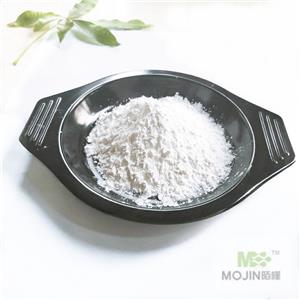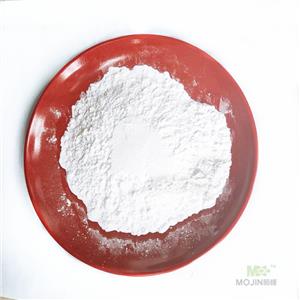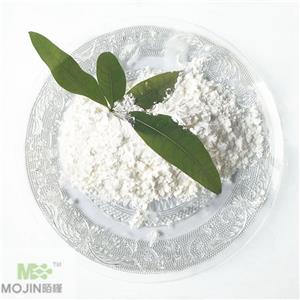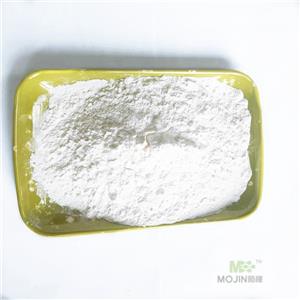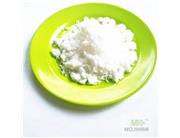| Product Name | Prostaglandin E1 |
| CAS No | 745-65-3 |
| EC-No | 212-017-2 |
| Min. Order | 1KG |
| Purity | 99% |
| Supply Ability | 50000KG/month |
| Release date | 2025/03/21 |
| CAS: | 745-65-3 |
| MF: | C20H34O5 |
| MW: | 354.49 |
| EINECS: | 212-017-2 |
| Product Categories: | API;Prostaglandins;Miscellaneous Biochemicals;Chiral Reagents;Intermediates & Fine Chemicals;Prostaglandin E1, Edex, Muse, Liprostin;Prostaglandin;Pharmaceuticals;Prostanoid receptor and related;745-65-3 |
| Mol File: | 745-65-3.mol |
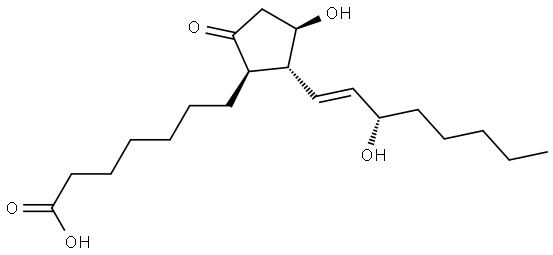 | |
| Prostaglandin E1 Chemical Properties |
| Melting point | 115-116 °C |
| alpha | -64 º (c=1.0, C2H5OH) |
| Boiling point | 407.69°C (rough estimate) |
| density | 1.0458 (rough estimate) |
| refractive index | 1.6120 (estimate) |
| storage temp. | -20°C |
| solubility | ethanol: 1 mg/mL |
| form | powder |
| pka | pKa 4.85± 0.07(H2O,t=25±0.1,I=0.1(NaCl)) (Uncertain) |
| color | White to off-white |
| Water Solubility | insoluble |
| Merck | 13,7968 |
| BRN | 5294062 |
| Stability: | Stable for 1 year from date of purchase as supplied. Solutions in DMSO or ethanol may be stored at -20°C for up to 1 month. |
| InChIKey | GMVPRGQOIOIIMI-DWKJAMRDSA-N |
| Prostaglandin E1 Usage And Synthesis |
| Outline | Prostaglandin E1 (Prostaglandin E1), also known as alprostadil. Prostaglandin E1 is widely present in the body of biologically active substances, as one of the prostaglandin family, it is a recognized endogenous physiologically active substances. Prostaglandin E1 acts directly on vascular smooth muscle, dilates blood vessels, increases blood flow, improves microcirculation perfusion; and inhibits platelet aggregation and thromboxane A2 production, inhibits atherosclerosis, lipid plaque and immune complex formation; it also owns following effects: the expansion of the periphery small blood vessels and coronary arteries, reduction of peripheral vascular resistance and blood pressure, protection platelet membrane against thrombosis; protection the ischemic myocardium, reducing myocardial infarct size; anti-heart failure; renal vascular dilation, increased renal blood flow, removal of non-protein nitrogen, regulating sodium and water balance, with a diuretic and renal-protecting function. t1/2 is 5~10min. 68% is excreted by renal after hepatic metabolism . Clinical usage includes angina pectoris, myocardial infarction, pulmonary hypertension, chronic arterial occlusion. The above information is edited by the chemicalbook of Tian Ye. |
| Pharmacological effects | 1. It dilates blood vessels, inhibits platelet aggregation. 2. It improves liver circulation, increases the oxygen supply, promotes liver metabolism and detoxification. 3. It stabilizes liver cell membrane, inhibits of inflammatory cytokines and promotes regeneration. |
| Preparation Process | Sheep seminal vesicles → (KCl, EDTA-Na2, pH8) → Enzyme suspensions →incubated (hydroquinone, glutathione, two high-γ-linolenic acid) → the reaction liquid →extraction (acetone, diethyl ether, methylene chloride )→ prostaglandin crude → prostaglandin E1 crude (separation, silica gel). |
| Content determination | 1. Chromatographic conditions Detection wavelength: 214nm; flow rate: 1.0mL/min; mobile phase: acetonitrile: 0.02 mol/L potassium dihydrogen phosphate (pH = 4.9 ± 0.5) = 30:70; Column: Dumas C18 (200mm × 4.6mm, 5μm); injection volume: 10μL; the number of theoretical plates: prostaglandin E1 peak should not be less than 2000. 2. Preparation of the reference solution Exactly weighing reference substance PGE1 0.5mg, exactly adding 25% ethanol solution 5mL, 0.1mg/mLPGE1 solution was made. Exactly drawing 0.5mL to 5mL volumetric flask, add 25% ethanol solution to the given mark, thought 0.22μm microporous membrane. 3. Preparation of the test solution Exactly weighing homemade PGE crude 0.1mg, exactly adding ethanol solution 1mL, through 0.22μm microporous membrane. 4. The method for the content determination Exactly amounting the test solution 10μL, into the liquid chromatograph, pressing "1" under the conditions of operation, the peak area values of prostaglandin E1 absorption peak is measured, calculate the content of prostaglandin E1. |
| Structure and Pharmacokinetics | The basic structure of PGE1 is a fatty acid with twenty unsaturated carbon hydrocarbon, a five-carbon ring and the two hydrocarbon chains, there is a double bond in the side chain. The precursor of the body's synthesis of prostaglandins is arachidonic acid, which produces prostaglandins (such as PGD2, PGE1, PEG2, PGF2α, PGI2) and thromboxane synthase via epoxidation and lipid oxidation enzyme catalysis. PGE1 is biological instability in vivo, lung is the main place of synthesis and metabolism. When PGE1 passes through the pulmonary circulation for the first time , about 60%-90% is metabolized, its biotransformation products have almost no biological activity. PGE1 enters artery within 5min, it gets to the maximum and steady-state plasma concentrations in venous blood, the base plasma concentrations is restored after stopping input for 5minis . After β-oxidation and ω-oxidation, 88% of PGE1 metabolite excreted by urine within 72h, the remaining 12% in the faeces. Since PGE1 metabolism is quick, usually long time continuous infusion or a liposome preparation is prepared tomaintain efficacy . |
| Side effects | Adverse reactions of PGE1 may involve multiple body systems and organs, but the most common adverse reactions are at the injection site, mainly redness, itching, and vascular pain, vasculitis at the injection site, some patients skin can be a "red line" along the vein. Adverse reactions for digestive system ,include nausea, vomiting, diarrhea, which may be related to PGE1 gastrointestinal smooth muscle contraction effects. Cardiovascular adverse reactions and nervous system adverse reactions are more common. In addition, erythema, pruritus, rash, and anaphylaxis, which may be caused by PGE1 binding directly with mast cell surface glycoprotein to be sensitized , and then to produce a variety of immediate hypersensitivity antigen binding and biological activity release, particularly histamine and other substances causing allergic reactions. In addition, PGE1 can cause dry eyes, blurred vision, dry mouth, low back pain, and reduce the total number of white blood cells and other rare adverse reactions, it should also lead to enough clinical attention. During the treatment, it should pay attention to check body temperature, blood pressure and white blood cells. |
| Medication precautions | Cautions should be paid to heart failure, glaucoma, peptic ulcers, interstitial pneumonia . Having a stimulating effect on the vein, there may be redness, swelling, heat, pain and other symptoms of inflammation, it can cause phlebitis. You should adjust the drip rate or stop drip for observation. Provisional equipped with, you can not use frozen drugs. |
| Contraindications | 1. severe cardiac dysfunctions. 2. pregnant women. 3. Allergy |
| Clinical application | Used for clinical complications of diabetes, coronary heart disease, intractable heart failure, congenital heart disease with pulmonary hypertension, hypertension, cerebral infarction, chronic arterial occlusive disease, sudden deafness, retinal vein occlusion, viral hepatitis, chronic gastritis, duodenal ulcer, chronic renal insufficiency, pancreatitis, organ transplantation, erectile dysfunction, induction of labor and postpartum hemorrhage, necrosis of the femoral head, lumbar disc herniation, postherpetic neuralgia, bronchial asthma. |
| Dosage | Intravenous infusion: Usually a dose of 0.05~0.5μg/(kg · min), first dissolved in 2ml saline, angina 100μg/d in 5% glucose solution 250ml instillation; myocardial infarction 100~200μg/d added 250ml of 5% glucose solution infusion, severe available to 400μg/d. A course of treatment is 7~10d. |
| Chemical Properties | PG is a group of twenty-carbon straight-chain unsaturated fatty acid, arachidonic acid is usually the biosynthetic precursor, for prostate acid (prostanoic acid) is generated by enzymatic and non-enzymatic conversion , with an endogenous physiological skeleton active substance. In 1958 for the first time people obtained two pure PG crystallines from sheep seminal separation: PGE1 and PGF1α. Natural PG is classicified into three communities by structures (PG1, PG2, PG3), ten types (PGA, PGB, PGC, PGD, PGE, PGF, PGG, PGH, PGI, PGJ). E, F types in six natural PG, ie, PGE1, PGE2, PGE3 and PGF1α + PGF2α + PGF3α were earliest studied , the primary PG; A, B, C, D, G, H, I, J and other natural PG are called secondary PG. Various PG code names (such as E, F, etc.) are based on observations from the study during the early years. PG soluble in ether (ethyl) is represented by E, that is PGE, PG soluble in phosphate solution is represented by F (Swedish fosfate), namely PGF. PGA, PGB respectively are represented by PGE acid (acid) or base (base) processed end products. It is white or pale yellow needle-like crystal. Mp115-116 ℃, specific rotation-61.6 ° (c = 0.56, THF). Prostaglandin E1 is a physiologically active substance with the expansion of blood vessels and inhibit platelet aggregation, and can inhibit vascular smooth muscle cells free Ca2 +, inhibite vascular sympathetic nerve endings, release norepinephrine for vascular smooth muscle relaxation, to decrease peripheral resistance , lower blood pressure, increase coronary blood flow, reduce myocardial oxygen consumption, thereby to relieve angina and reduce the incidence of myocardial infarction and reduced infarct size. It can improve heart failure, myocardial contractility, increased cardiovascular output, improve the coronary circulation, protect the ischemic myocardium. It can effectively inhibit cholesterol formation of additional immune damage caused by atherosclerosis. It can inhibit smooth muscle cell growth and reduce plaque. Expansion of renal vessels and increase renal blood flow, regulate sodium and water balance, resulting in diuresis. |
| Uses | Used for diabetic neuropathy, myocardial infarction, thrombotic vasculitis, arteriosclerosis obliterans, central retinal vein thrombosis. It is used in the treatment of hepatitis cirrhosis, cerebral infarction, diabetes, impotence, respiratory diseases. Liver damage is not serious childA, class B patients, especially patients with antithrombin level childA China effect. For induction of labor, oxytocin, renal insufficiency, treatment mumps, pancreatitis. Injection of prostaglandin E1 is mainly applied to myocardial infarction, heart failure, thrombotic vasculitis, chronic arterial occlusive disease, central retinal vein thrombosis, platelet protection for extracorporeal circulation, arteriography, revascularization surgery. |
| Production method | Sheep seminal vesicles were uesd as raw material for the preparation of PGE crude , with enzyme preparation, incubation, organic solvent extraction, silica gel column separation. The preparation of PGE crude: sheep seminal vesicles [KCl, EDTANa2, PH8] → enzyme suspension [hydroquinone, glutathione] → [arachidonic acid, O2] reaction solution [acetone, ether, methylene chloride] → PGS crude [Separation] → [silica gel] PGE crude Preparation PGE1 finished product: per 1g PGE crude product used 20g silica gel, 10 times the mass of PGE activated silver nitrate silica gel from 200-250 mesh was suspended in expansion agents including: V ethyl acetate : V acetic acid: V petroleum ether: V water = 220: 22.5: 125 : 5 (bp of petroleum ether is 90-120 ℃) , with wet packed column. A small amount of the crude product was dissolved in the same expansion agents, put in the column , eluted. PGE1 and PGE2 were collected . The PGE1 part was put below 35 ℃ to nitrogen concentrating until acetic acid odor was removed, ethyl acetate was added to dissolve, added acid to wash, pH4-5, saline was added to remove silver. The ethyl acetate solution was set in the refrigerator overnight to get finished PGE1 . |
| Description | Prostaglandin E1 is an endogenous prostaglandin with vasodilatory, anti-platelet, and anti-hypertensive activities. It is in clinical use for the treatment of erectile dysfunction and the emergency management of infants with patent ductus arteriosus. It has also been used in the treatment of peripheral arterial occlusive disease (PAD). |
Packing &shipping&Payment
Shipping:by sea or by air
Payment:T/T,western union,moneygram
Packaging Details drum
Port:Tianjin
Lead Time :
| Quantity(Kilograms) | 1 - 10000 | >10000 |
| Est. Time(days) | 5 | To be negotiated |

 Company information
Company information
Hebei Mojin Biotechnology Co., Ltd, Our company is a professional in 4'-Methylacetophenone,Levamisole hydrochloride ,N-Methylformamide and other chemical reagents research and development production enterprises. Our business covers more than 30 countries, most of the big customers come from Europe, America and other countries in the world, we can guarantee the quality and price. In recent decades, with the efforts of all employees, we have established many cooperative companies in shandong, henan, guangdong and other places. Our corporate purpose is based on the market, enhance the strength, take the road of scientific and environmental sustainable development, relying on the country. Technology r & d center, increase the investment in r & d, based on the domestic market, expand the international market, manufacturing quality products, sincere service to the society, into a modern, ecological, scientific and technological enterprise world.
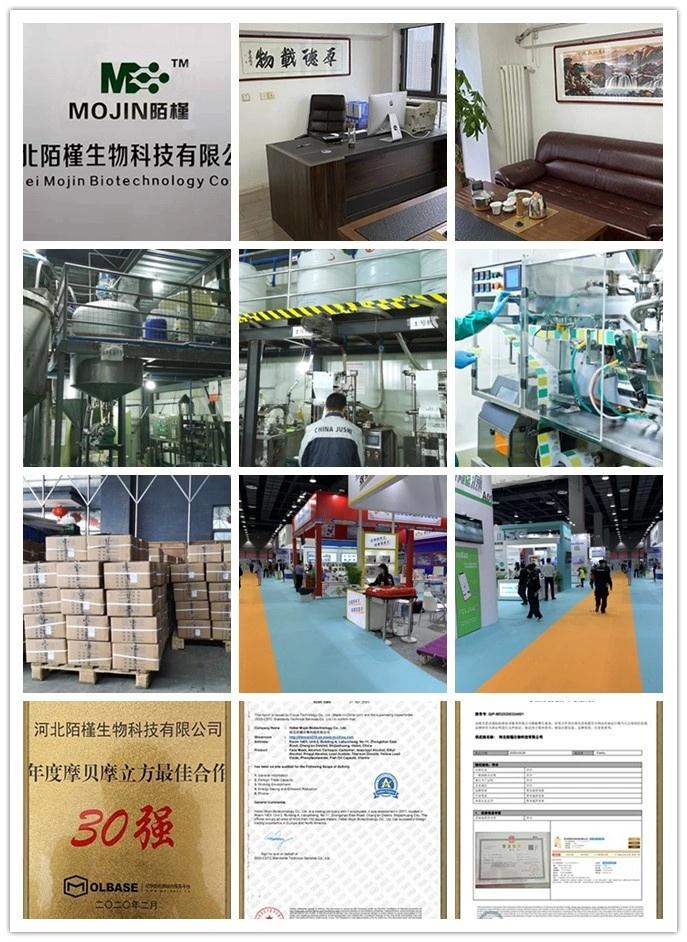 Advantage
Advantage
In stock
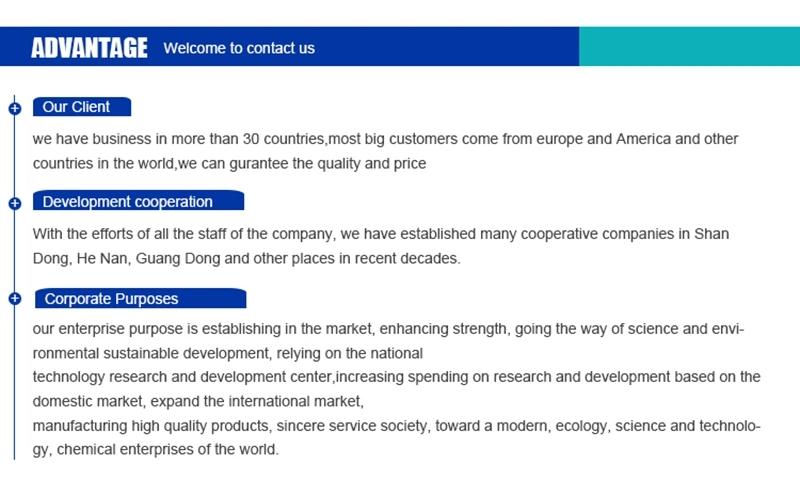
Company Profile Introduction
-
